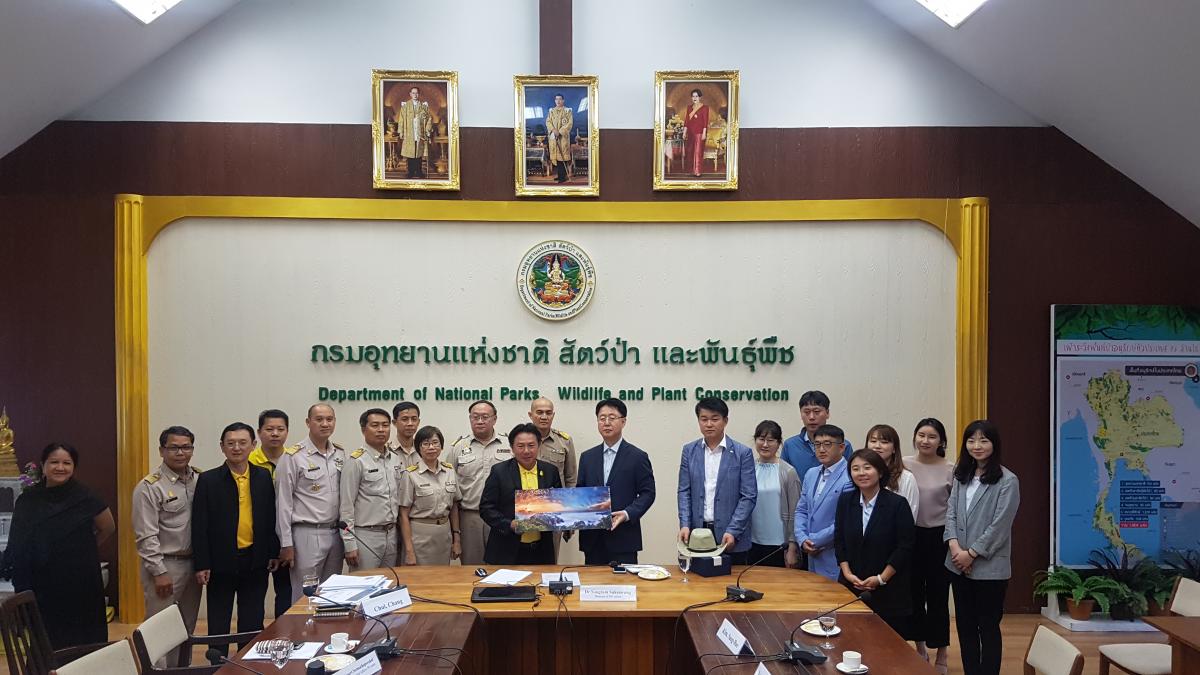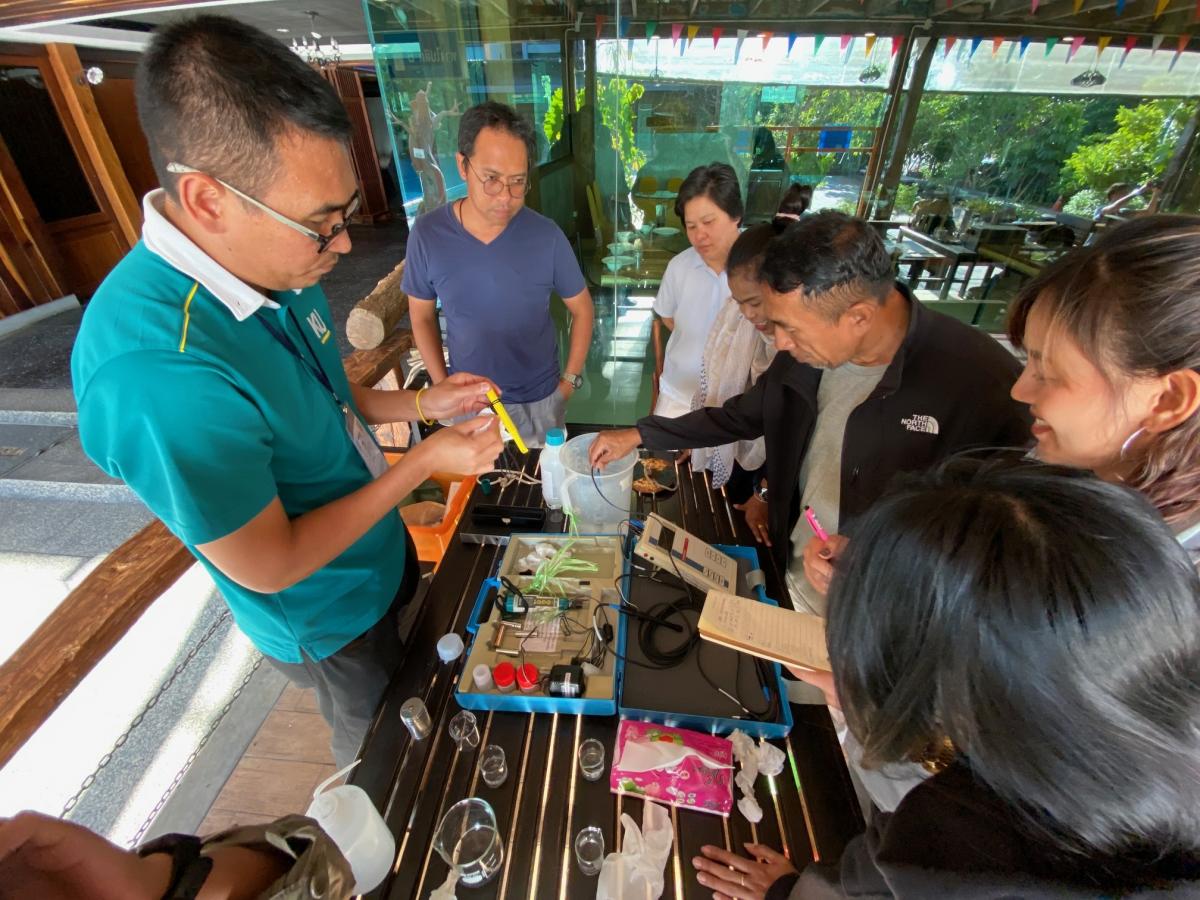Fish Conservation Zones lead to stronger communities, fewer conflicts and more fish
Fish Conservation Zones (FCZs) are areas that are closed to fishing in order to protect habitats and restore fish populations. Besides their use for conservation, FCZs can also be a valuable tool for strengthening local communities and reducing local conflict. Local Thai NGO, Living Rivers Association, in the Lower Mun and Mekong Rivers, has demonstrated how this can happen.
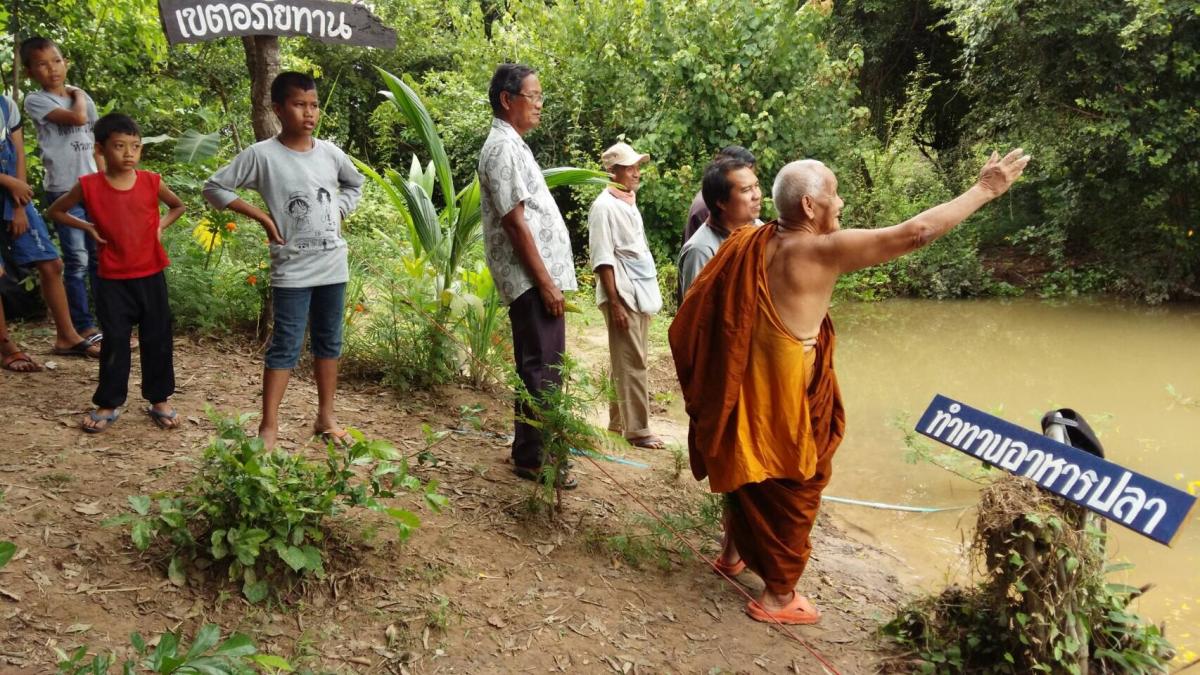
A monk blesses Muansila FCZ in Kho Tai Village as part of the official designation ceremony
Photo: © Living River Association
Located in northeastern Thailand, the Mun River is the largest tributary of the Mekong. It is estimated that around 10 million people depend on the richness of its riverine ecosystems for their survival. As a result of the construction of many dams in the last decade, villagers have noticed that fish populations have dwindled. This poses risks to their livelihoods and food security.
Through a grant from the Critical Ecosystem Partnership Fund (CEPF), for which IUCN is an implementing partner in the Indo-Burma region, the Living River Association implemented a project that aimed to help communities to restore and protect fish habitats in the Lower Mun and Mekong Rivers.
The uniqueness of this project was its approach in supporting not only FCZs, but also multi-stakeholder engagements. The project worked with 11 local communities as well as NGOs, government agencies and local governments. Involvement of the local communities, however, remained key: much of the project’s success in enabling the protection of the river was due to the establishment of local mechanisms made possible through the convergence of communities and civil society networks.
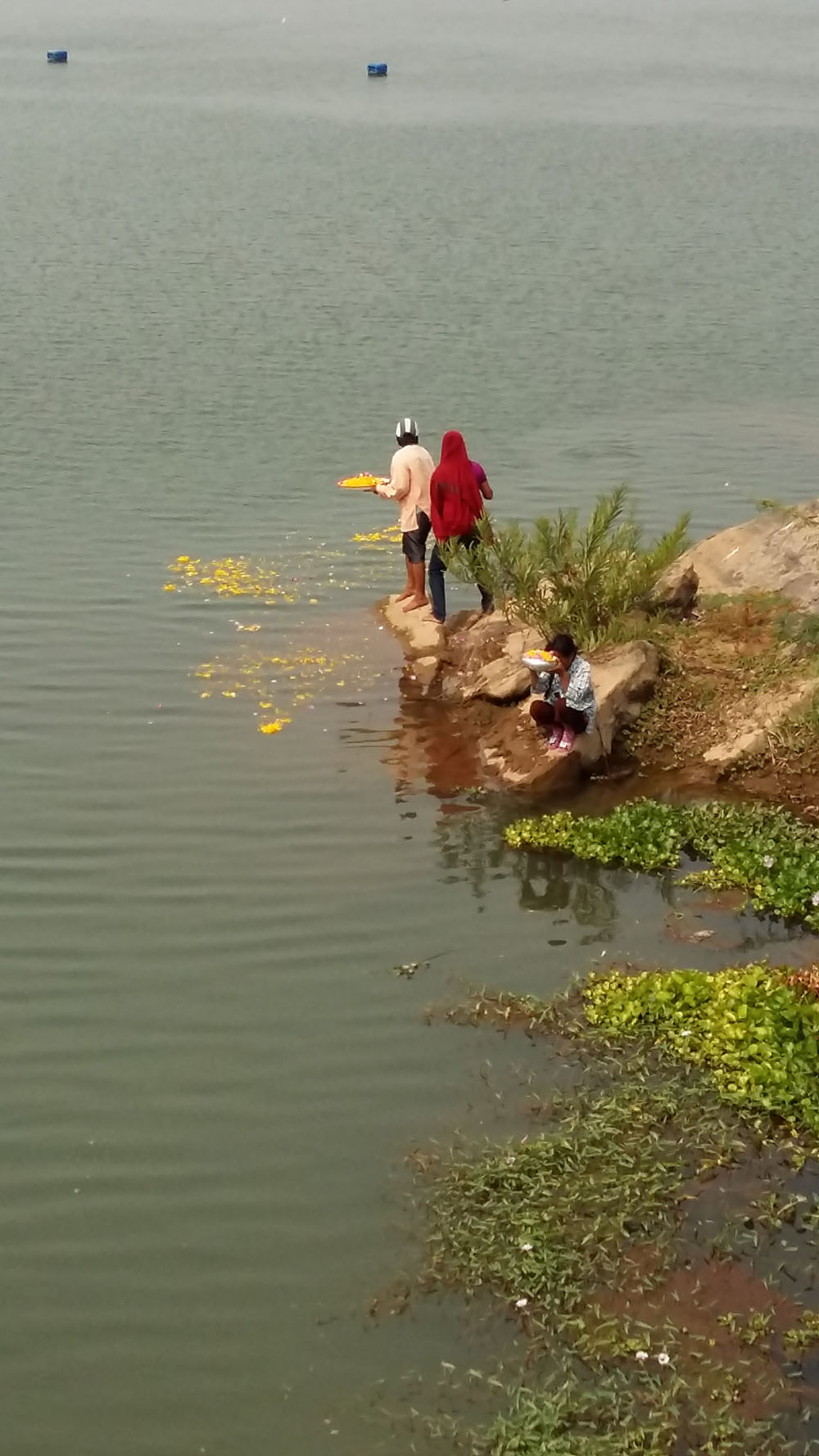 People drop chrysanthemum petals into the waters of Phuphalalex FCZ to celebrate its establishment, 2016
Photo: © Living River Association
People drop chrysanthemum petals into the waters of Phuphalalex FCZ to celebrate its establishment, 2016
Photo: © Living River Association
Among the groups that Living River involved in the project were: Network of Local Communities affected by the Pak Mun Dam (NCPM); Tamui Local Learning Center (TLC); Mekong Watch Japan; People Council of the Ing River Basin; and the Network of Thai People in Eight Mekong Provinces (NTEMP). Close working relationships were also established with the district and provincial fishery offices. NCPM and another community network, Love the Mekong Community Network, played a pivotal role in taking the work forward on the ground.
To strengthen the capacity of local groups, the project organised community meetings to plan FCZ activities, review existing regulations, management systems and enforcement, discuss environmental problems, and talk about the role and importance of community networks. Field visits, planning and monitoring activities, and exchange visits were also organised.
By the end of the project period, villagers reported that two Critically Endangered fish species, the Mekong Giant Catfish and the Siamese Tigerfish, were once again being found in the FCZ in Kun Rai Tai village in the Lower Mun River. It was also reported that villagers in the area were making more fishing gear than in the previous years, indicating that there are indeed more fish to catch in the river. In support of the project, students from Rangsit University also successfully conducted the first underwater drone survey on freshwater fish in Thailand.
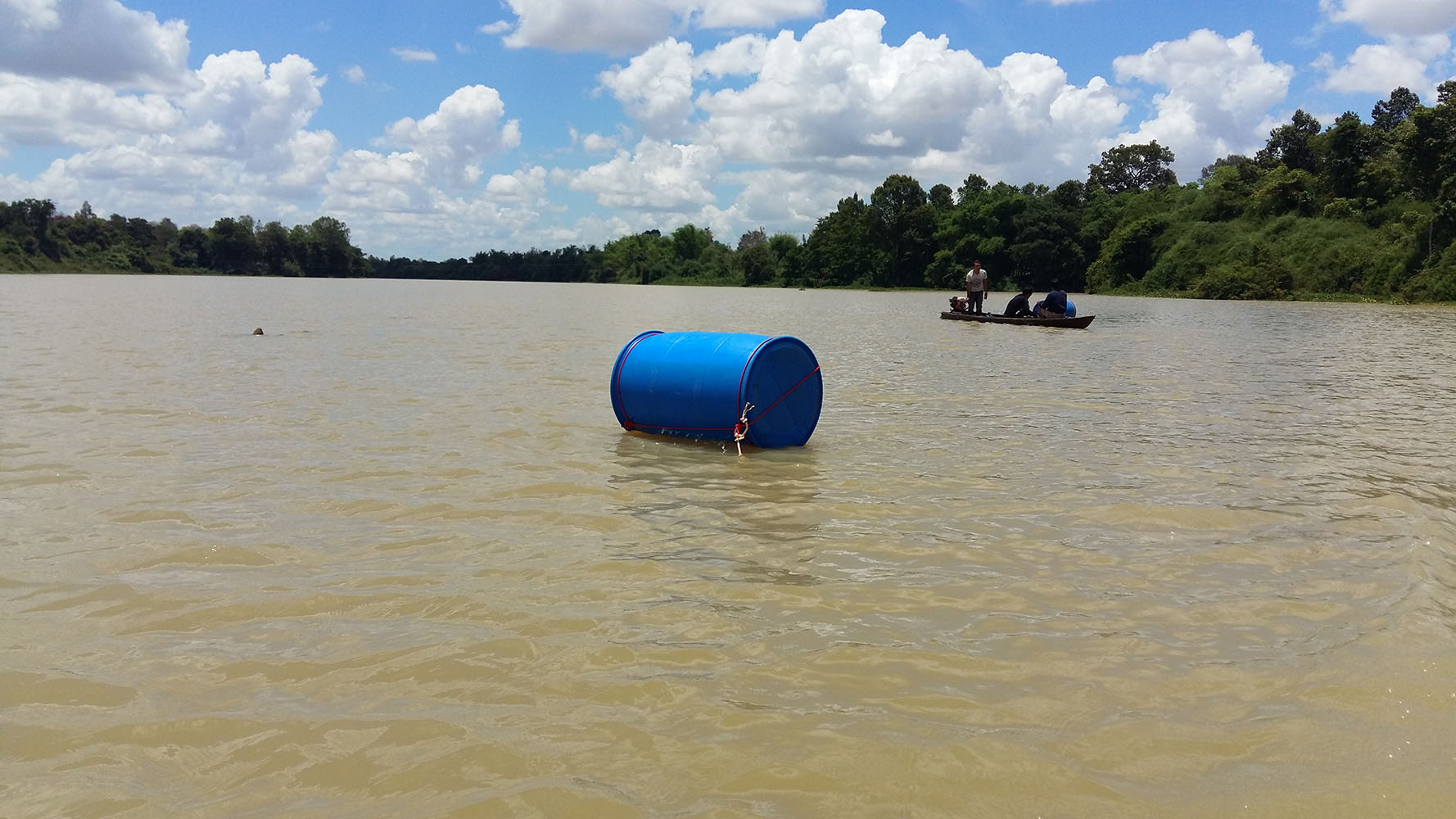 An anchored barrel marks the boundary of an FCZ in Don Samran Village
Photo: © Living River Association
An anchored barrel marks the boundary of an FCZ in Don Samran Village
Photo: © Living River Association
The biggest takeaway from the project was the value of FCZs as a tool not only for conservation but also for conflict resolution, network building, and strengthening local institutions.
“Our work on the FCZs also fostered networking, cooperation and capacity building. Communities were heavily engaged in every aspect of FCZ design and implementation, and their active participation ensured that the project’s activities met their needs. The use of social media to communicate the importance of FCZs also helped to ensure that all sectors were involved,” said Teerapong Pomun, Director, Living River Association.
“Community-based projects are most successful and sustained when people are empowered to protect what is dear to them,” said Alessandro Badalotti, Senior Programme Officer, Species, IUCN Asia. “Through strengthening the cooperation of local people, NGO groups and networks, fish habitats in the Lower Mun and Mekong Rivers were restored and protected.”
Ensuring long-term protection of fish habitats in the two rivers does not come without challenges. But Living Rivers Association and CEPF are confident that biodiversity protection can be sustained as long as people are empowered to protect our planet’s rich ecosystems.
Founded in 2000, the Critical Ecosystem Partnership Fund is a global leader in enabling civil society to participate in and benefit from conserving some of the world’s most critical ecosystems by providing grants for organisations to help protect biodiversity hotspots, Earth’s most biologically rich yet threatened areas. CEPF is a joint initiative of l'Agence Française de Développement, Conservation International (IUCN Member), the European Union, the Global Environment Facility, and the Government of Japan (IUCN State Member).
IUCN is leading the second phase of CEPF's work in the Indo-Burma hotspot, working together with the Myanmar Environment Rehabilitation-conservation Network (MERN) and Kadoorie Farm and Botanic Garden (KFBG) to form the CEPF Regional Implementation Team (RIT).
